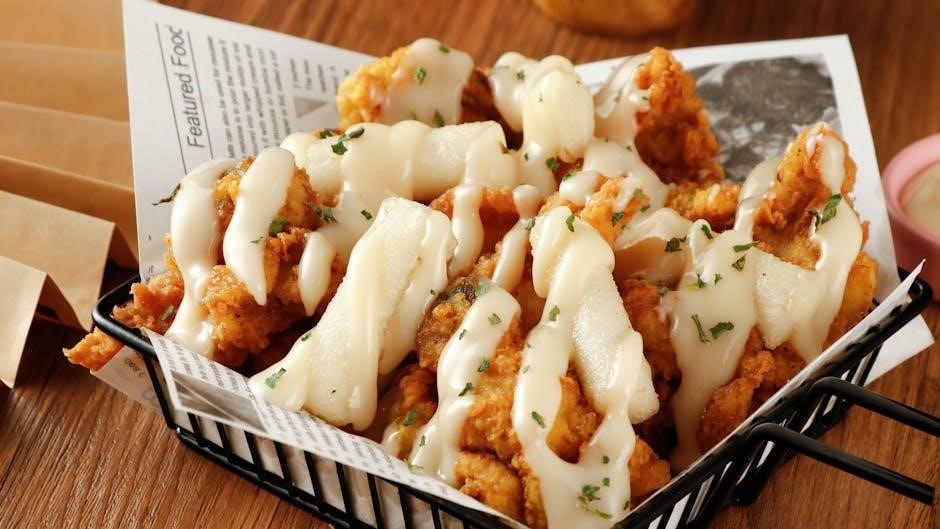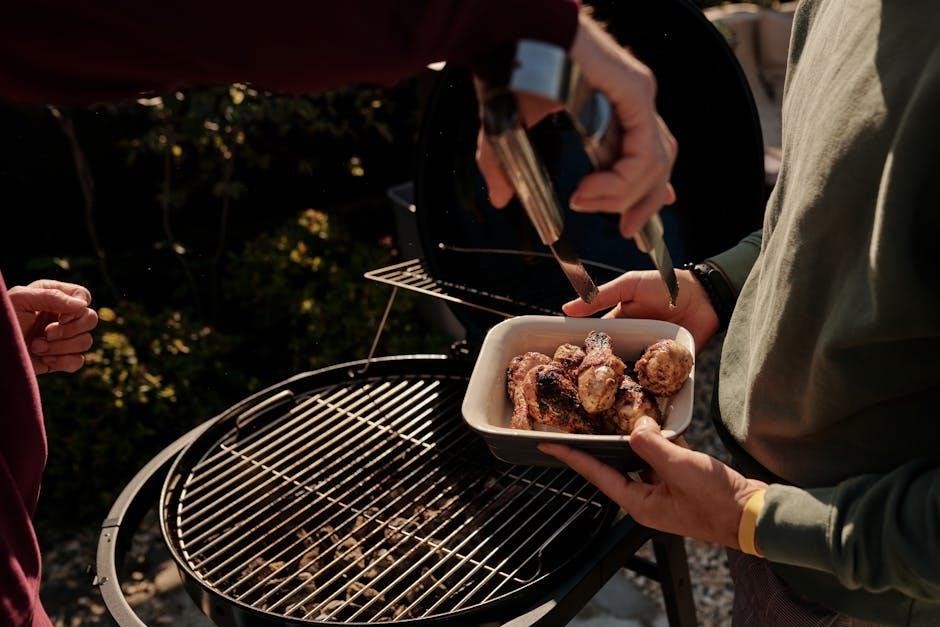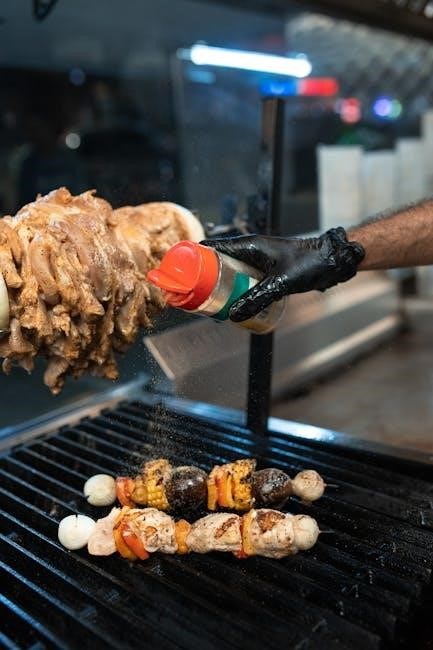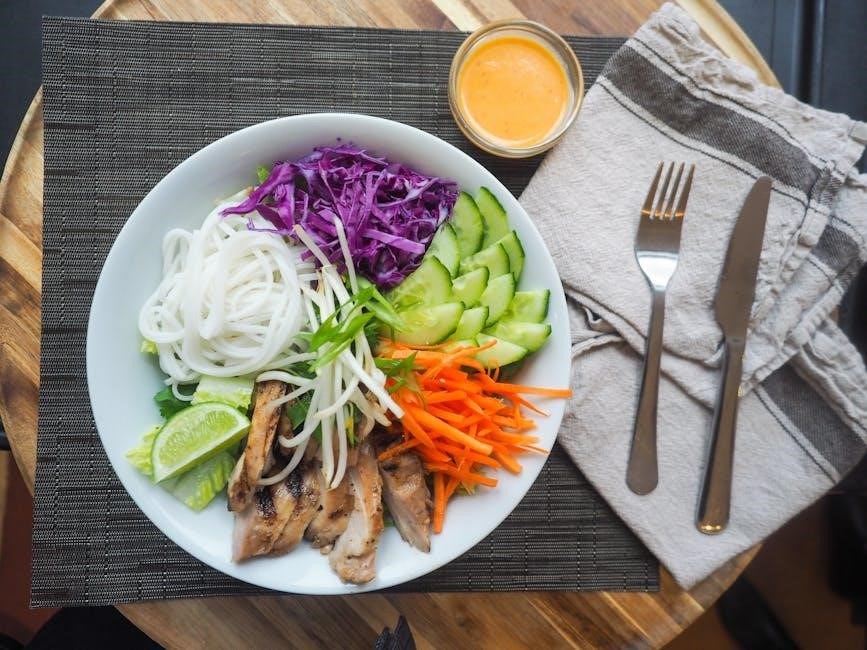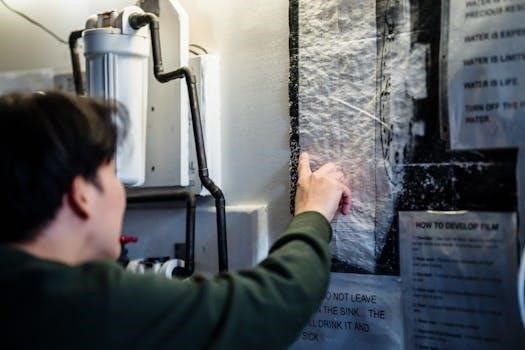The Woodpecker Endo Smart Endo Motor is a cutting-edge‚ cordless dental device designed for precise endodontic procedures․ It features an integrated apex locator‚ enhancing accuracy and efficiency․
1․1 Overview of the Woodpecker Endo Smart Endo Motor
The Woodpecker Endo Smart Endo Motor is a advanced‚ cordless endodontic device designed for precise and efficient root canal treatments․ It features a built-in apex locator‚ ensuring accurate measurements and minimizing procedural errors․ The motor offers multiple operation modes‚ including auto-forward and auto-reverse functions‚ and is equipped with a user-friendly interface for easy navigation․ Its compact‚ ergonomic design enhances comfort during prolonged procedures․ With customizable settings and robust torque control‚ the Endo Smart motor is tailored for versatility in various endodontic applications‚ making it a reliable choice for dental professionals․
1․2 Importance of the Instruction Manual
The instruction manual is essential for the safe and effective use of the Woodpecker Endo Smart Endo Motor․ It provides detailed guidance on setup‚ operation‚ and maintenance‚ ensuring optimal performance․ The manual outlines safety precautions‚ operational modes‚ and troubleshooting tips‚ helping users avoid potential errors․ By following the manual‚ professionals can comply with regulatory standards and extend the device’s lifespan․ Understanding the manual is crucial for mastering the motor’s advanced features and ensuring reliable outcomes in endodontic procedures․

Technical Specifications of the Woodpecker Endo Smart Endo Motor
The Woodpecker Endo Smart Endo Motor features a brushless design‚ built-in apex locator‚ and multiple programmable settings for precise control during endodontic procedures․
2․1 Motor Power and Speed
The Woodpecker Endo Smart Endo Motor delivers exceptional power with adjustable speed settings‚ ranging from 120 to 2000 rpm‚ and a maximum torque of 3․0 Ncm․ This ensures precise control during endodontic procedures‚ allowing for efficient and safe root canal preparation․ The motor features an auto-stop reverse function to prevent instrument breakage‚ enhancing safety and reliability․ With its advanced brushless design‚ the motor provides consistent performance and durability‚ making it suitable for a wide range of endodontic applications․
2․2 Battery and Charging System
The Woodpecker Endo Smart Endo Motor is equipped with a high-capacity lithium-ion battery‚ ensuring extended operation time․ The battery supports quick charging via the USB-C port on the control unit‚ achieving full charge in approximately 2․5 hours․ The system includes overcharge protection and a LED indicator for real-time battery status monitoring․ This advanced charging system ensures consistent power delivery‚ minimizing downtime during procedures․ The battery’s reliability and long lifespan make it a key feature of the Woodpecker Endo Smart Endo Motor’s design․
2․3 Apex Locator Integration
The Woodpecker Endo Smart Endo Motor seamlessly integrates with an apex locator‚ enhancing precision in root canal procedures․ This integration ensures accurate measurement of the working length‚ reducing the risk of over-instrumentation․ The system provides real-time feedback‚ optimizing canal preparation and obturation․ The motor adjusts its speed and torque based on the locator’s readings‚ ensuring safer and more efficient procedures․ This advanced integration is a critical feature for achieving optimal clinical outcomes in endodontic treatments․

Components of the Woodpecker Endo Smart Endo Motor System
The system includes a lightweight handpiece‚ a control unit with a user-friendly interface‚ and essential accessories like motors‚ files‚ and adapters for diverse endodontic procedures․
3․1 Handpiece Design and Features
The handpiece is ergonomically designed for comfort and precision‚ featuring a lightweight and balanced structure to reduce fatigue during prolonged procedures․ It includes a compact head with a 360-degree swivel‚ allowing easy access to all tooth surfaces․ The handpiece incorporates advanced torque control and speed adjustment‚ ensuring optimal performance for various endodontic tasks․ A built-in LED light provides excellent illumination‚ and the quiet operation minimizes patient anxiety․ The handpiece is also equipped with a cooling system to prevent overheating and an antimicrobial coating for enhanced infection control․ It is compatible with a wide range of endodontic files and adapters‚ making it versatile for different clinical needs․
3․2 Control Unit and Interface
The control unit is the central hub of the Woodpecker Endo Smart Endo Motor system‚ featuring a high-resolution color touchscreen display for intuitive operation․ It provides real-time feedback on motor speed‚ torque‚ and apex locator readings‚ ensuring precise control during procedures․ The interface supports customizable settings and pre-programmed modes for various endodontic applications․ Equipped with USB and Bluetooth connectivity‚ it facilitates seamless software updates and data transfer․ The unit also includes a compact‚ ergonomic design with a durable build‚ making it suitable for clinical environments․ Its user-friendly interface enhances efficiency and accuracy in endodontic treatments․
3․3 Accessories and Attachments
The Woodpecker Endo Smart Endo Motor system includes a range of accessories designed to enhance functionality and convenience․ Key attachments comprise interchangeable handpiece sleeves‚ adapters for compatibility with various file systems‚ and a foot pedal for precise control during procedures․ Additional accessories include a charging dock‚ power cord‚ and a carrying case for easy transport․ These components ensure versatility‚ ease of use‚ and optimal performance in clinical settings‚ making the system a comprehensive solution for endodontic treatments․

Safety Precautions and Guidelines
Ensure proper training before use‚ avoid water exposure‚ use original accessories only‚ wear protective gear‚ and follow guidelines to prevent malfunctions and ensure safe operation․
4․1 General Safety Considerations
Always follow proper training and usage guidelines to ensure safe operation․ Handle the motor with care‚ avoiding excessive force or exposure to water․ Use only approved accessories to prevent damage․ Regularly inspect the device for wear or damage․ Keep the device out of reach of unauthorized personnel‚ especially children․ Ensure proper ventilation during operation to prevent overheating․ Adhere to all maintenance schedules and guidelines provided․ Failure to comply may result in malfunction or injury․ Proper safety measures are essential for reliable performance and user protection․
4․2 Handling and Storage Instructions
Handle the Woodpecker Endo Smart Endo Motor with care to prevent damage․ Avoid dropping or applying excessive force․ Use a protective case when transporting․ Store the motor in a dry‚ cool environment‚ away from direct sunlight․ Maintain the device in an upright position to prevent liquid leakage․ Do not store the handpiece or control unit in extreme temperatures or humid conditions․ Keep the battery charged to at least 20% when storing for extended periods․ Follow the manual’s guidelines for proper handling and storage to maintain functionality and longevity․
4․3 Emergency Procedures
In case of an emergency‚ such as motor failure or unintended operation‚ immediately turn off the device․ If the handpiece overheats‚ stop use and let it cool․ For exposure to liquids‚ disconnect the device and allow it to dry completely before reuse․ If the system malfunctions‚ restart the control unit․ For persistent issues‚ refer to the troubleshooting guide or contact customer support․ Always prioritize patient safety and follow proper protocols to avoid complications․

Installation and Setup
Begin by unpacking and inspecting all components․ Connect the motor to the control unit and apex locator․ Install the software‚ ensuring compatibility with your system․ Calibrate the device following on-screen instructions to ensure precise operation․
5․1 Unpacking and Initial Inspection
Carefully unpack the Woodpecker Endo Smart Endo Motor system‚ ensuring all components are included and undamaged․ Inspect the handpiece‚ control unit‚ and accessories for any visible wear or damage․ Verify the presence of the power cord‚ apex locator‚ and instructional manual․ Check for any signs of shipping damage‚ such as dented casing or loose connections․ If any issues are found‚ contact customer support immediately before proceeding with installation․
5․2 Connecting the Motor and Apex Locator
Connect the Woodpecker Endo Smart Endo Motor to the apex locator using the provided cable․ Ensure the motor is powered off before making any connections․ Align the connector with the designated port on the control unit and secure it firmly․ Plug in the apex locator to the corresponding socket․ Turn on the motor and verify the connection status via the control panel․ Ensure all lights or indicators show a stable connection․ If the connection is loose or unstable‚ repeat the process․ Proceed to the next step only when the system confirms proper communication between devices․
5․3 Software Installation and Calibration
Install the Woodpecker Endo Smart Endo Motor software from the provided CD or download it from the official website․ Launch the application and follow the on-screen instructions to complete the installation․ Once installed‚ connect the motor to your computer via the USB port․ Open the software‚ select the motor model‚ and proceed to the calibration menu․ Adjust settings according to the system prompts and save the configuration․ Run a test file to ensure proper functionality․ Calibration ensures optimal performance and synchronization with the apex locator for precise endodontic procedures․

Operating Modes and Configurations
The Woodpecker Endo Smart Endo Motor features multiple operating modes‚ including Endo mode for root canal procedures‚ Prophy mode for cleaning‚ and Custom mode for personalized settings․
6․1 Endomotor Mode and Its Functions
The Endomotor mode is designed for precise control during endodontic procedures‚ offering adjustable speed and torque settings to suit various canal sizes and treatment requirements․ It ensures consistent rotation and eliminates manual fatigue․ The mode includes preset programs for different file types and procedures‚ optimizing efficiency and safety․ Real-time feedback ensures the motor adapts to resistance‚ minimizing the risk of file breakage․ This mode is essential for achieving predictable outcomes in root canal treatments‚ combining accuracy with user-friendly operation․
6․2 Custom Programming Options
The Woodpecker Endo Smart Endo Motor allows users to customize settings to meet specific clinical needs․ Custom programming options enable adjustment of speed‚ torque‚ and direction for precise control․ Users can save preferred settings in memory slots‚ streamlining repetitive procedures․ The intuitive interface simplifies programming‚ ensuring ease of use․ This feature enhances efficiency and adaptability‚ allowing clinicians to tailor the motor’s performance for diverse endodontic cases‚ from routine to complex procedures‚ while maintaining optimal safety and effectiveness․
6․3 Adaptive Settings for Different Procedures
The Woodpecker Endo Smart Endo Motor offers adaptive settings tailored for various endodontic procedures‚ ensuring optimal performance․ It automatically adjusts speed and torque based on the procedure type‚ such as root canal treatment‚ retreatment‚ or apicoectomy․ These adaptive settings enhance efficiency and safety‚ minimizing the risk of instrument breakage․ Real-time feedback ensures precise control‚ while predefined profiles for specific cases streamline the workflow․ This versatility allows clinicians to adapt the motor to diverse clinical scenarios‚ improving outcomes and patient care․ The motor’s intelligent design supports complex procedures with ease and accuracy․

Maintenance and Troubleshooting
Regular maintenance ensures optimal performance․ Clean the handpiece‚ update software‚ and inspect for wear․ Troubleshooting addresses common issues like motor malfunction or connectivity problems promptly․
7․1 Regular Maintenance Schedule
Perform daily cleaning of the handpiece with a soft cloth and distilled water․ Sterilize the handpiece using an autoclave at 135°C for 15 minutes․ Check battery levels regularly and avoid overcharging․ Lubricate internal parts every 50 procedures using the provided oil․ Update firmware periodically to ensure optimal performance․ Inspect cable and connections for damage․ Store the device in a cool‚ dry place when not in use․ Follow the manufacturer’s guidelines for maintenance to extend the lifespan of the motor․
7․2 Common Issues and Solutions
Common issues with the Woodpecker Endo Smart Endo Motor include motor malfunction‚ inconsistent speed‚ or apex locator inaccuracy․ For motor issues‚ restart the device and ensure proper power supply․ If speed is inconsistent‚ recalibrate the motor or update the firmware․ For apex locator inaccuracies‚ check the connection and perform a calibration procedure․ Clean the handpiece regularly to prevent debris buildup․ Contact customer support if problems persist after troubleshooting․ Always refer to the manual for detailed solutions to ensure optimal performance and longevity of the device․
7․3 Updating Firmware and Software
To ensure optimal performance‚ regularly update the Woodpecker Endo Smart Endo Motor’s firmware and software․ Connect the device to a computer via USB and use the provided software to check for updates․ Download and install the latest version‚ following on-screen instructions․ Avoid interrupting the update process to prevent system corruption․ Once complete‚ restart the motor and apex locator to apply changes․ Updated firmware enhances functionality‚ improves accuracy‚ and resolves potential bugs‚ ensuring the device operates at its best․ Always use official software from the manufacturer to maintain compatibility and security․

Compliance and Regulatory Information
The Woodpecker Endo Smart Endo Motor complies with international medical device standards‚ including FDA and CE certifications‚ ensuring safety and performance․ Adheres to environmental regulations like RoHS․ Warranty and service details are provided for post-purchase support․
8․1 Regulatory Certifications and Standards
The Woodpecker Endo Smart Endo Motor is certified to global medical device standards‚ ensuring compliance with safety and performance requirements․ It holds FDA 510(k) clearance in the U․S․ and CE marking under the EU Medical Device Regulation (MDR)․ The device also meets ISO 13485:2016 for quality management systems and ISO 10993 for biocompatibility․ Additionally‚ it adheres to IEC 60601-1-2 for electromagnetic compatibility (EMC)․ These certifications confirm its suitability for clinical use and alignment with international regulatory expectations for dental endomotor systems․
8․2 Environmental and Disposal Guidelines
The Woodpecker Endo Smart Endo Motor must be disposed of in accordance with local and international environmental regulations․ Battery disposal should follow guidelines for lithium-ion batteries‚ ensuring they are recycled or handled as hazardous waste․ Electronic components should be processed through approved e-waste facilities to minimize environmental impact․ Avoid disposing of the device in regular household waste․ Always recycle whenever possible and adhere to biohazard disposal protocols for used dental materials․ Proper disposal helps protect the environment and complies with sustainability standards․

8․3 Warranty and Service Information
The Woodpecker Endo Smart Endo Motor is covered by a limited one-year warranty from the date of purchase․ The warranty covers defects in materials and workmanship under normal use and conditions․ To claim warranty service‚ the product must be registered and used as per the instructions․ For maintenance or repairs‚ contact the authorized service center․ Customer support is available via email‚ phone‚ or the official website․ Ensure to retain the purchase receipt and follow the warranty terms for valid claims․ Refer to the manual or contact support for detailed warranty conditions and service options․

Role of Woodpeckers in the Ecosystem
Woodpeckers play a vital role in maintaining ecological balance by controlling insect populations and creating nesting sites for other species‚ supporting biodiversity and forest health․
9․1 Woodpeckers as Keystone Species
Woodpeckers are recognized as keystone species due to their significant ecological impact․ By creating nesting cavities‚ they provide habitat for numerous other birds‚ mammals‚ and insects․ Their foraging behavior controls insect populations‚ reducing forest damage and maintaining tree health․ Additionally‚ woodpeckers contribute to nutrient cycling through their drumming and excavating activities‚ which aid in forest regeneration․ Their presence ensures biodiversity and ecosystem stability‚ making them indispensable to their environments․
9․2 Habitat Creation and Maintenance
Woodpeckers play a vital role in habitat creation and maintenance through their nesting and foraging activities․ They excavate cavities in trees‚ which later serve as nesting or shelter sites for other birds‚ mammals‚ and insects․ These cavities also contribute to tree decomposition‚ aiding forest regeneration․ Additionally‚ woodpeckers help control insect populations‚ reducing tree damage and promoting a balanced ecosystem․ Their activities indirectly support biodiversity by creating microhabitats and fostering ecological interactions within forests․
9․3 Species Diversity and Adaptations
Woodpeckers exhibit remarkable species diversity‚ with over 240 species worldwide‚ each adapted to specific habitats․ Their robust skulls‚ chisel-like beaks‚ and shock-absorbing neck muscles enable efficient tree drumming and foraging․ Specialized feathers and strong tail muscles aid climbing․ Different species have unique nesting behaviors and dietary preferences‚ enhancing their ecological roles․ These adaptations ensure survival across varied environments‚ making woodpeckers crucial for forest health and biodiversity․
The Woodpecker Endo Smart Endo Motor is a cutting-edge dental tool‚ offering precision and efficiency․ For detailed insights‚ refer to the official manual and scientific studies․
10․1 Summary of Key Points
The Woodpecker Endo Smart Endo Motor is a advanced dental instrument designed for precise root canal treatments․ It features adjustable speed‚ apex locator integration‚ and adaptive settings for optimal performance․ The motor is powered by a rechargeable battery‚ ensuring portability and convenience․ Regular maintenance and adherence to safety guidelines are crucial for longevity․ Users should refer to the manual for detailed operating instructions‚ troubleshooting‚ and compliance information․ This device is a reliable tool for dental professionals‚ combining innovation with user-friendly design to enhance procedural efficiency and patient care․
10․2 Recommended Reading and Resources
For deeper understanding‚ refer to the official Woodpecker Endo Smart Endo Motor manual and technical guides․ Additional resources include peer-reviewed dental journals‚ instructional videos on the manufacturer’s website‚ and training materials from dental associations․ Online forums and workshops hosted by dental professionals also offer valuable insights and tips for optimizing the device’s performance․ These resources ensure users stay updated on best practices and troubleshooting techniques for the Woodpecker Endo Smart Endo Motor․














